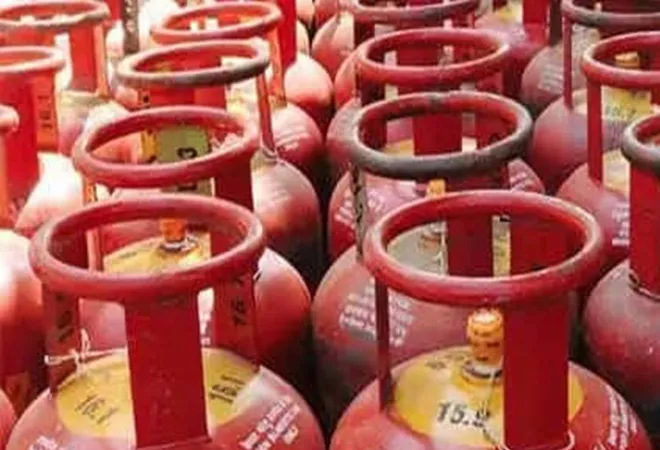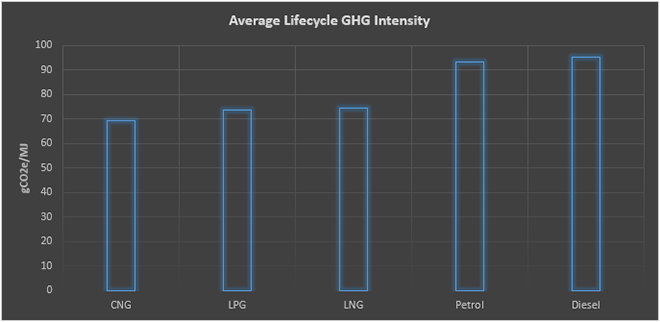
Transitioning to cleaner fuels requires navigating the
energy trilemma—optimising the demand for energy security, sustainability and affordability.
Natural gas is well-publicised as the bridge fuel that can deliver on all three constraints of the energy trilemma but liquefied petroleum gas (LPG) is probably a lesser-known option that can match and possibly exceed the capabilities of natural gas. LPG is abundantly available which ensures
energy security; it is sustainable as it is officially classified as a clean fuel with zero global warming potential. The simplicity of LPG production and transport makes it affordable.
LPG Basics
LPG is a combination of
propane (C3H8) and butane (C4H10) gases but the respective proportion of the gases may vary depending on end-use requirements. In India LPG consists of propane and butane in the
ratio of 60:40 but the ratio can vary depending on end use specifications and the relative price of butane and propane. In the USA, LPG is composed of a minimum of
90 percent by volume of propane and in Europe propane share ranges from
70-80 percent depending on the season while Korea utilises over
85 percent butane in LPG in the summer months. The ratios at which these components exist can have significant effects on the
fuel properties of LPG such as energy content, vapour pressure, and octane number.
LPG has a modest
vapour pressure that allows for LPG to be stored in a liquid state at modest pressures in relatively inexpensive steel vessels allowing for
high energy densities. In comparison, natural gas must be highly compressed to the atmospheric pressure, or cryogenically frozen to liquid form at temperatures less than
-160°C (Celsius) to achieve energy densities suitable for transportation applications. CNG (compressed natural gas) and LNG (liquified natural gas) require more expensive storage tanks due to the more
extreme pressure or temperature requirements.
LPG can be stored for long periods of time without experiencing
degradation in quality which makes it suitable for multiple uses in rural, urban and industrial settings. In the context of rural energy, shelf life is critical as service for replacement and maintenance are often scarce. LPG can be
transported in small or large quantities which makes LPG a versatile energy source at the household level as well as key fuel and
feedstock at the industry level. As elaborate infrastructure of pipelines is not necessary to support
transport of LPG, it is often the only fuel to reach islands or high-altitude communities and, in times of emergency or national disaster, crucial to survival.
While there is a degree of natural variation in
heating values due to the specific proportions of butane and propane within a particular sample of LPG, it nevertheless has a comparably high heating value, meaning it contains more energy per kilogramme than most competing fuels. On a mass basis, LPG has one of the
highest energy contents. However, on a volume basis LPG has a lower energy content than conventional fuels such as petrol and diesel. This is related to the lower density of LPG versus these conventional fuels which means more fuel is required on a volume basis to achieve the same output as conventional fuels. LPG exhibits a
small advantage in this respect compared to other alternative fuels, such as LNG and ethanol.
Compared to petrol, LPG has a relatively
high-octane number. In general, as the percentage of hydrocarbons that are a higher order than propane, (e.g., butane) increases the octane number decreases and vice versa for lower order hydrocarbons, e.g., methane and ethane. The higher-
octane number of LPG relative to petrol can offer performance and efficiency advantages. More advanced ignition timing and a higher compression ratio can be utilised with less susceptibility to
pre-ignition or knock when compared to petrol.
LPG is produced either through the
oil refining process or it is extracted directly from the ground alongside petroleum and natural gas. Worldwide, natural gas processing is the source of approximately 60 percent of LPG produced. The
LPG yield depends on the type of crude oil, the degree of sophistication of the oil refinery and the market values of propane and butane compared to other oil products.
Because LPG is a by-product, supplies rely on the availability of natural gas and crude oil refining. Globally there is a
marginal surplus in LPG production and LPG is flared off in some countries because the cost of moving it to demand centres exceeds the value of the product. The recent
production of LPG in North America and elsewhere driven by shale gas production together with planned production of LPG from
natural gas fields, indicate that this surplus will continue to ensure sufficient LPG supplies in the next few decades. More than 50 percent of LPG consumption in India is met through imports.
Carbon Intensity & Global Warming Potential
The composition of LPG (the ratios of propane, butane and other hydrocarbons) determines its carbon intensity which is often quantified by the
hydrogen-to-carbon (H:C) ratio of the fuel. Propane has eight hydrogen atoms and three carbon atoms equating to a H:C ratio of approximately 2.67. The
H:C ratio increases for lower-order alkanes such as methane and ethane and decreases for higher-order alkanes such as butane. On the other hand, conventional transportation fuels, i.e., petrol and diesel, typically exhibit a H:C ratio ranging from 1.7 to 1.9. In theory, higher H:C ratio of LPG compared to alternative fossil fuels results in
lower carbon dioxide (CO
2) and soot production during combustion.
The carbon intensity or the quantity of carbon emitted per unit energy delivered of LPG also depends on its
chemical composition and the use to which it is put but in general it is comparable to that of natural gas. The full life-cycle default
carbon intensity of LPG is about 76 CO
2e/MJ (carbon-di-oxide equivalent per million joule) compared to about 75-78 CO
2e/MJ for natural gas, about 90 CO
2e/MJ for petrol and diesel and 112 CO
2e/MJ for coal.
‘
Carbon footprint’ describes the global warming potential (GWP) of fuels in kilograms or tonnes of CO
2e. GWPs for atmospheric gases have been defined and redefined over time by the Intergovernmental Panel on Climate Change (IPCC) as part of the UN Framework Convention on Climate Change (UNFCCC). IPCC
100-year GWPs are commonly used for the purposes of lifecycle and footprint analysis, and they are recommended for use in footprint guidelines. A fuel’s GWP is its global warming impact relative to an equivalent unit of CO
2 over 100 years. By definition, CO
2 is assigned a GWP of 1. Going by the definition of the IPCC, LPG is not a greenhouse gas, meaning it is assigned a GWP of zero.
According to the world health organisation (WHO)
clean fuels and technologies are those that attain either the annual average air quality guideline level (AQG) of 5 micro grams per cubic meter (µg/m
3) or 35 µg/m
3 for PM
2.5 (particulate matter)
and 7 mg/m3 for CO (carbon monoxide). Under this criteria, solar/electric cookers, biogas, natural gas, LPG and alcohol fuels including ethanol are clean for health at the point of use. The inclusion of abundantly available fossil fuels such as LPG and natural gas as clean fuels will enable achievement of
sustainable development goal 7 (SDG 7) of the UN 2030 Agenda for Sustainable Development that calls for universal access to affordable, reliable and modern energy for all.
LPG is generally perceived as a clean fuel possibly because of the
negative connotation attached to the word “petroleum”, but it is a versatile and robust and clean source of energy with properties that can contribute to improving all three dimensions of the energy trilemma. For India, which is ranked
63rd among 91 countries in the energy trilemma index, continued policy push for the replacement of unprocessed biomass with LPG as primary cooking fuel will contribute to improving its ranking. LPG use in transport and industry will further strengthen its
energy security without compromising on sustainability and equity.
 Source: Ryskamp, Ross (2017), Emissions and Performance of Liquefied Petroleum Gas as a Transportation Fuel: A Review
Source: Ryskamp, Ross (2017), Emissions and Performance of Liquefied Petroleum Gas as a Transportation Fuel: A Review
The views expressed above belong to the author(s). ORF research and analyses now available on Telegram! Click here to access our curated content — blogs, longforms and interviews.



 Transitioning to cleaner fuels requires navigating the
Transitioning to cleaner fuels requires navigating the 
 PREV
PREV




